Table of Contents
The UNESCO Sites in South Korea have resulted from the recognition of 15 cultural and natural landmarks as UNESCO World Heritage Sites in South Korea and 13 locations on the South Korean UNESCO tentative list. These tourist sites in South Korea are acknowledged for their unique and valuable cultural, natural, artistic, and historical significance and are preserved for future generations to enjoy.
In addition to this 15 site on the South Korea UNESCO list, there are many other places to travel to South Korea that are being considered for UNESCO recognition. These sites, listed on the tentative list, showcase the rich cultural heritage of the country and are waiting for approval to join the prestigious and famous World Heritage Sites list.
To help visitors discover these remarkable South Korean tourist attractions, we have put together an interactive map of the UNESCO sites in South Korea.
South Korea UNESCO Map
Click markers to show information and photo.
UNESCO World Heritage Sites in South Korea
There is 15 UNESCO World Heritage Site in South Korea. All of these three sites are listed under the Cultural category.
- Baekje Historic Areas
- Changdeokgung Palace Complex
- Gochang, Hwasun and Ganghwa Dolmen Sites
- Gyeongju Historic Areas
- Haeinsa Temple Janggyeong Panjeon, the Depositories for the Tripitaka Koreana Woodblocks
- Historic Villages of Korea: Hahoe and Yangdong
- Hwaseong Fortress
- Jongmyo Shrine
- Namhansanseong
- Royal Tombs of the Joseon Dynasty
- Sansa, Buddhist Mountain Monasteries in Korea
- Seokguram Grotto and Bulguksa Temple
- Seowon, Korean Neo-Confucian Academies
- Getbol, Korean Tidal Flats
- Jeju Volcanic Island and Lava Tubes
UNESCO World Heritage Sites in South Korea are protected locations for their cultural and natural importance.
Baekje Historic Areas
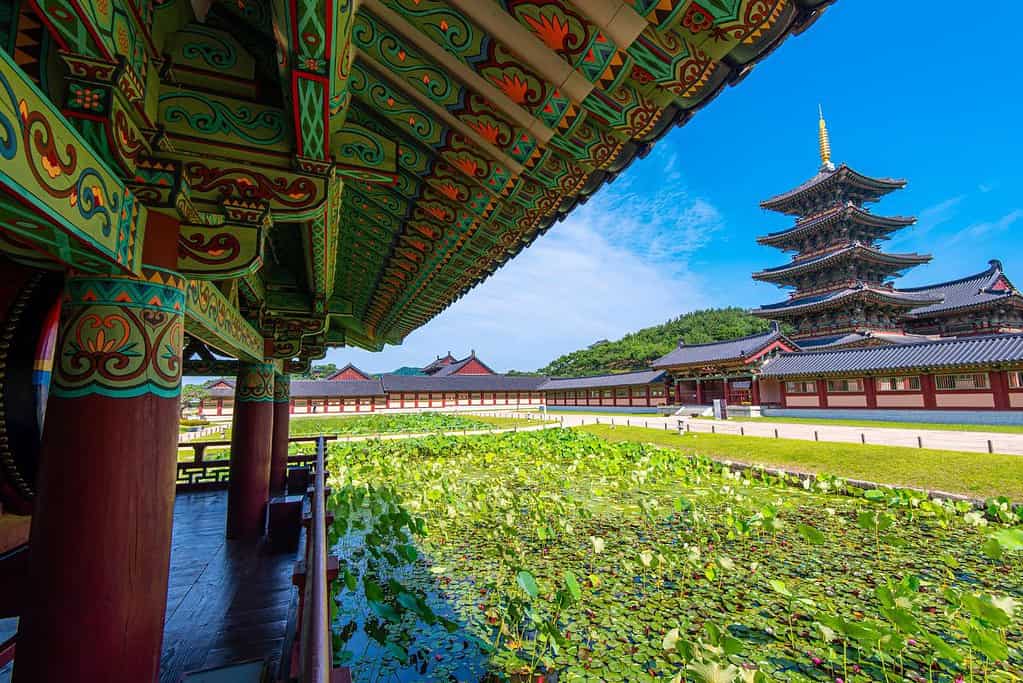
Baekje Historic Areas, a UNESCO World Heritage Site located in South Korea, is a testament to the rich cultural heritage of the ancient Baekje Kingdom. Spanning multiple locations, including Gongju, Buyeo, and Iksan, these historic areas showcase the architectural and artistic achievements of the Baekje civilization. Visitors can explore impressive fortresses, royal tombs, temples, and archaeological sites that offer valuable insights into the kingdom’s political, religious, and social life. The Baekje Historic Areas provide a captivating journey through time, allowing visitors to appreciate the legacy and contributions of the Baekje Kingdom to Korean history and culture.
Changdeokgung Palace Complex

Changdeokgung Palace Complex is a UNESCO World Heritage Site in Seoul, South Korea. It is a remarkable example of Korean palace architecture and design. The palace complex dates back to the Joseon Dynasty and served as the main royal residence for many centuries. It features a harmonious blend of natural elements, such as gardens and forests, with stunning architectural structures like the main palace building, Injeongjeon Hall. The complex also includes Huwon, a beautiful secret garden that offers a tranquil retreat for the royal family. Changdeokgung Palace Complex stands as a testament to the rich cultural heritage of Korea and provides a glimpse into its royal past.
Gochang, Hwasun and Ganghwa Dolmen Sites
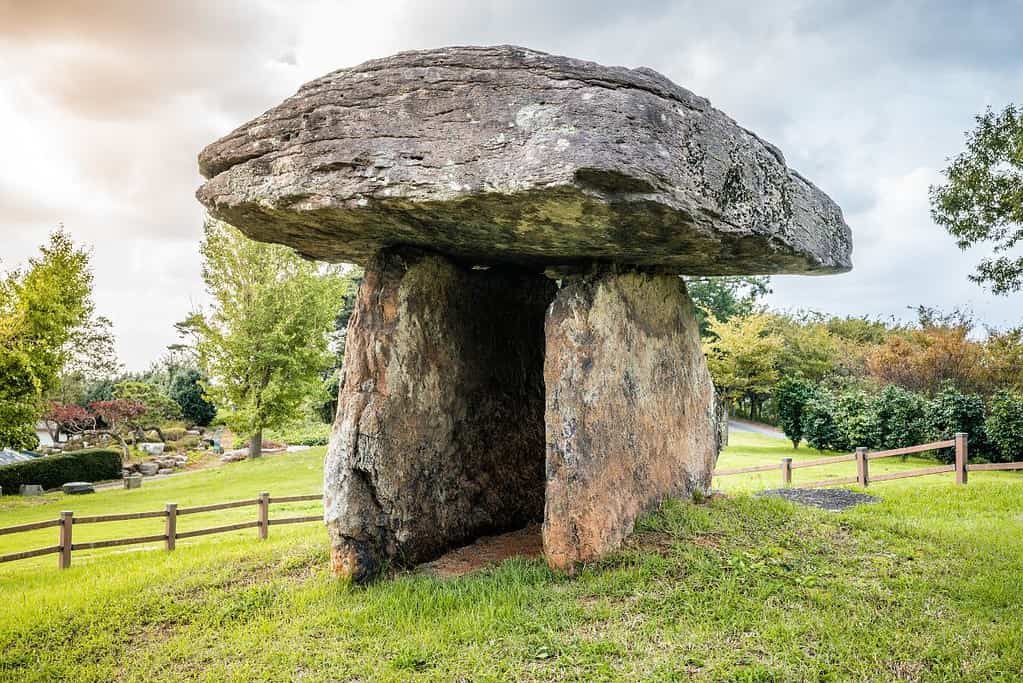
The Gochang, Hwasun, and Ganghwa Dolmen Sites in South Korea are designated UNESCO World Heritage Sites. These sites are renowned for their impressive collection of dolmens, ancient megalithic tombs. The dolmens, dating back to the Bronze Age, are characterized by large stone slabs that form a chamber and are topped with a capstone. These sites provide a fascinating glimpse into the region’s prehistoric cultural practices and burial traditions. The Dolmen sites of Gochang, Hwasun, and Ganghwa serve as remarkable testaments to the ingenuity and craftsmanship of the ancient inhabitants of South Korea.
Gyeongju Historic Areas

Gyeongju Historic Areas, a UNESCO World Heritage Site in South Korea, is a treasure trove of ancient history and cultural significance. Located in Gyeongju, this site showcases the remnants of the ancient Silla Kingdom, which flourished from the 7th to 10th centuries. The area boasts numerous historical landmarks, including the Bulguksa Temple, known for its exquisite Buddhist architecture and serene beauty. The Seokguram Grotto, an awe-inspiring granite cave temple, houses a remarkable statue of Buddha. Visitors can explore the royal tombs of the Silla kings at Tumuli Park, where massive earthen mounds stand as a testament to their power and grandeur. The Gyeongju Historic Areas are captivating destinations that glimpse Korea’s rich history and cultural heritage.
Haeinsa Temple Janggyeong Panjeon, the Depositories for the Tripitaka Koreana Woodblocks
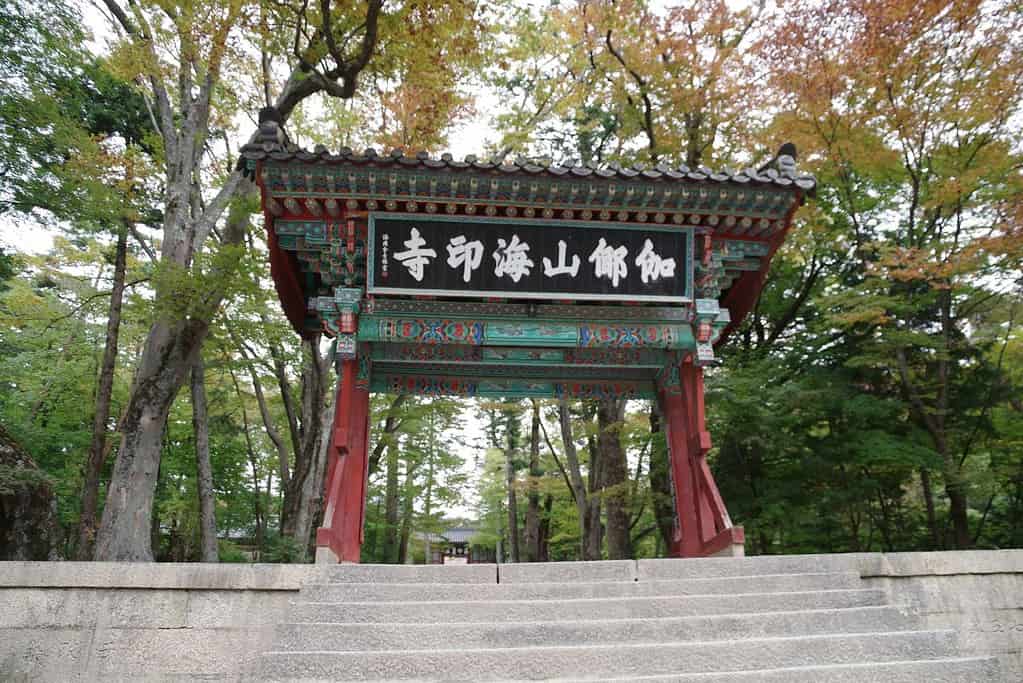
Haeinsa Temple Janggyeong Panjeon, the Depositories for the Tripitaka Koreana Woodblocks, is a UNESCO World Heritage Site in South Korea. It is an exceptional testament to the preservation of Buddhist scriptures. The temple’s Janggyeong Panjeon houses the Tripitaka Koreana, a complete set of Buddhist texts carved onto over 80,000 wooden blocks. These woodblocks were meticulously crafted in the 13th century and have withstood the test of time, making them a remarkable cultural treasure. The depositories are designed to maintain a stable environment, protecting the woodblocks from moisture, temperature fluctuations, and fire. Haeinsa Temple Janggyeong Panjeon is a significant historical and religious landmark, showcasing the enduring commitment to preserving knowledge and spiritual wisdom.
Historic Villages of Korea: Hahoe and Yangdong
The Historic Villages of Korea: Hahoe and Yangdong are UNESCO World Heritage Sites in South Korea. These villages are exceptional examples of traditional Korean rural settlements, preserving the country’s cultural heritage and way of life. Hahoe Village, situated in the foothills of the Hwasan Mountains, is renowned for its traditional houses, known as hanok, and its unique mask dance drama called Hahoe Byeolsin-gut. Yangdong Village, nestled in the valleys of the Yeongnam Alps, features beautifully preserved Joseon-era houses, ancestral halls, and Confucian academies. These villages offer visitors a glimpse into Korea’s rich historical and architectural legacy, showcasing the harmonious integration of human settlements with their natural surroundings.
Hwaseong Fortress
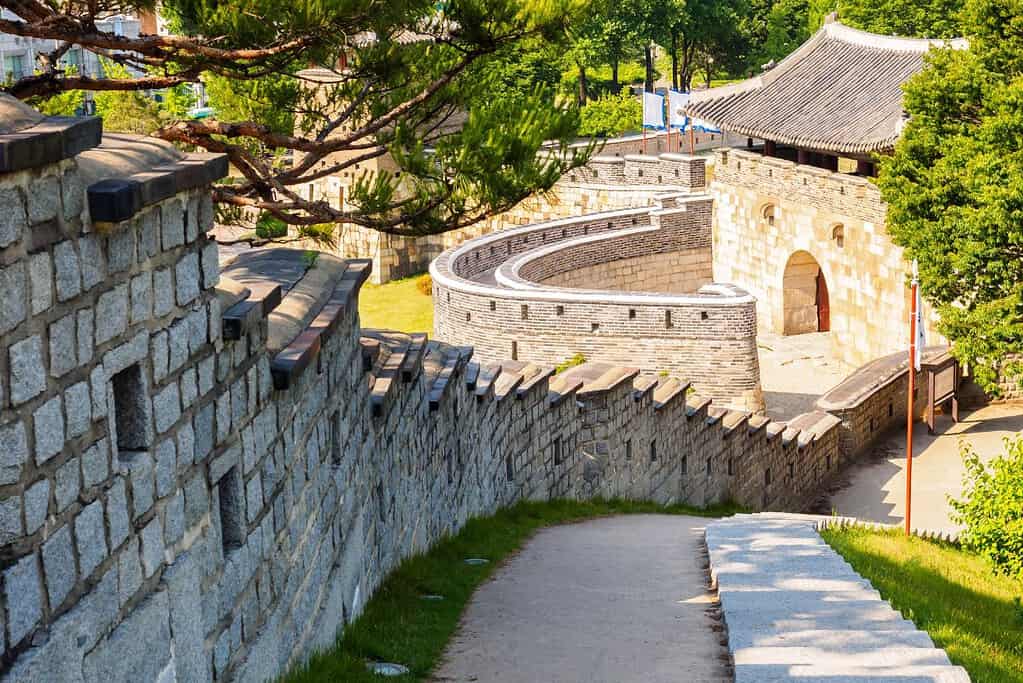
Hwaseong Fortress, a UNESCO World Heritage Site, is a remarkable architectural marvel in Suwon, South Korea. Built-in the late 18th century, this fortress served as a fortified city center and played a significant role in defending the region. Its strategic design combines military and civilian elements, featuring impressive stone walls, majestic gates, and intricate bastions and watchtowers. Hwaseong Fortress is a testament to the ingenuity and craftsmanship of the Joseon Dynasty, showcasing the fusion of traditional Korean architecture with innovative techniques of the time. It remains an iconic symbol of Suwon and attracts visitors worldwide, offering a glimpse into Korea’s rich cultural and historical heritage.
Jongmyo Shrine

Jongmyo Shrine, a UNESCO World Heritage Site in Seoul, South Korea, holds excellent cultural and historical significance. Built-in the 14th century, it is dedicated to the ancestral rituals of the Joseon Dynasty. The shrine’s architecture showcases traditional Korean design’s elegant and refined style, meticulously crafted wooden structures, and beautiful detailing. The site is known for its peaceful atmosphere and serene gardens, offering visitors a glimpse into Korea’s rich heritage and spiritual traditions. Jongmyo Shrine stands as a revered symbol of ancestral worship and continues to be a cherished cultural landmark in the heart of Seoul.
Namhansanseong

Namhansanseong is a UNESCO World Heritage Site in Gyeonggi Province, South Korea. It is an ancient fortress city that served as a crucial defensive stronghold during various periods of Korean history. The fortress is strategically situated on the mountainous terrain, offering breathtaking views of the surrounding landscapes. Namhansanseong features well-preserved walls, gates, temples, and other structures, providing a glimpse into Korea’s rich architectural and cultural heritage. It is a historical site and a popular destination for hiking and outdoor activities, attracting visitors with its natural beauty and historical significance.
Royal Tombs of the Joseon Dynasty

The Royal Tombs of the Joseon Dynasty is a UNESCO World Heritage Site in South Korea. This site comprises a collection of 40 tombs from the Joseon Dynasty, which was the last dynasty to rule Korea. These tombs are the final resting places of kings and queens, their spouses, and other royal family members. The tombs are known for their majestic architecture and serene natural settings, reflecting the Confucian principles of harmony and balance. Each tomb is carefully designed to blend harmoniously with the surrounding landscape, creating a peaceful and contemplative atmosphere. The Royal Tombs of the Joseon Dynasty stand as a testament to the country’s rich cultural heritage and provide valuable insights into the royal traditions of ancient Korea.
Sansa, Buddhist Mountain Monasteries in Korea
Sansa, Buddhist Mountain Monasteries in Korea, is a UNESCO World Heritage Site that showcases the unique spiritual and architectural traditions of Korean Buddhism. Located amidst breathtaking natural landscapes, Sansa comprises seven mountain monasteries well-preserved over the centuries. These monasteries, such as Buseoksa, Bongjeongsa, and Beopjusa, exemplify the harmonious integration of Buddhist structures with their surrounding environment. They feature stunning wooden halls, pagodas, and sculptures that reflect the skill and artistry of Korean craftsmen. Sansa serves as a spiritual sanctuary for monks and practitioners and stands as a testament to the rich cultural heritage of Korea.
Seokguram Grotto and Bulguksa Temple
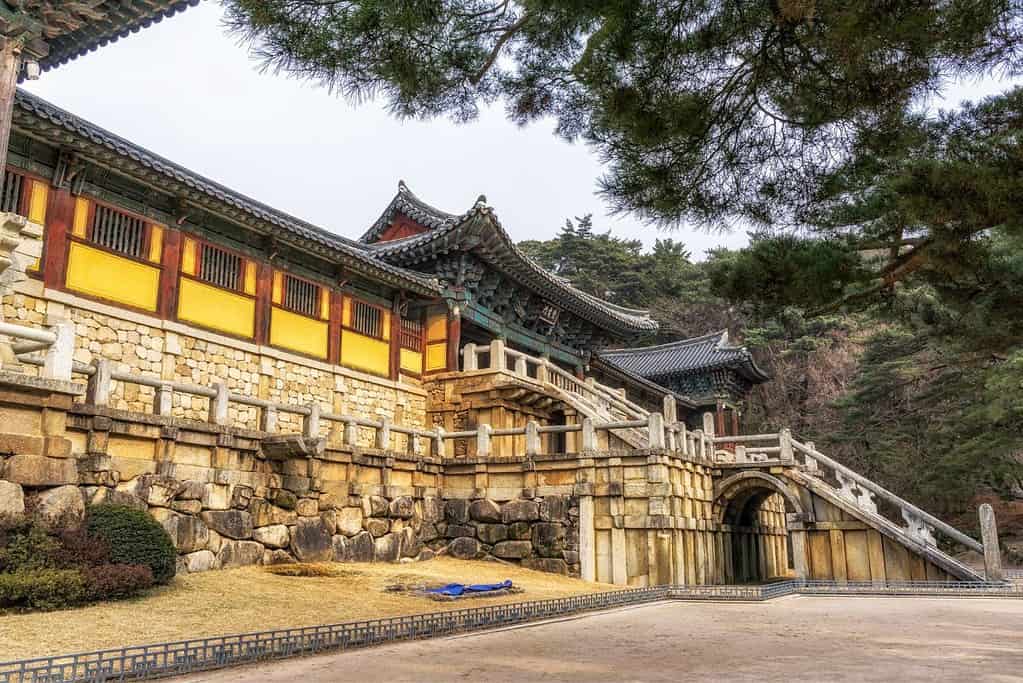
Seokguram Grotto and Bulguksa Temple, located in South Korea, are both UNESCO World Heritage Sites renowned for their historical and cultural significance. Seokguram Grotto, constructed in the 8th century, is an exquisite example of Buddhist art and architecture. The grotto houses a magnificent stone Buddha statue surrounded by intricate stone carvings, showcasing the skill and craftsmanship of the era. Adjacent to the grotto is Bulguksa Temple, a renowned Buddhist temple complex that dates back to the 6th century. The temple features stunning pagodas, halls, and bridges, harmoniously blending with the natural surroundings. Together, Seokguram Grotto and Bulguksa Temple stand as remarkable testaments to the rich spiritual and artistic heritage of South Korea.
Seowon, Korean Neo-Confucian Academies

Seowon, the Korean Neo-Confucian Academies, is a UNESCO World Heritage Site in South Korea. These academies were established during the Joseon Dynasty and were crucial in promoting Confucianism and educating scholars. Seowon served as the center of learning and intellectual discourse, embodying the principles of Confucianism and fostering a deep appreciation for Korean culture. The academies feature beautiful architectural designs, blending harmoniously with the natural surroundings. They are significant historical landmarks and symbols of Korea’s rich intellectual heritage and enduring commitment to education.
Getbol, Korean Tidal Flats
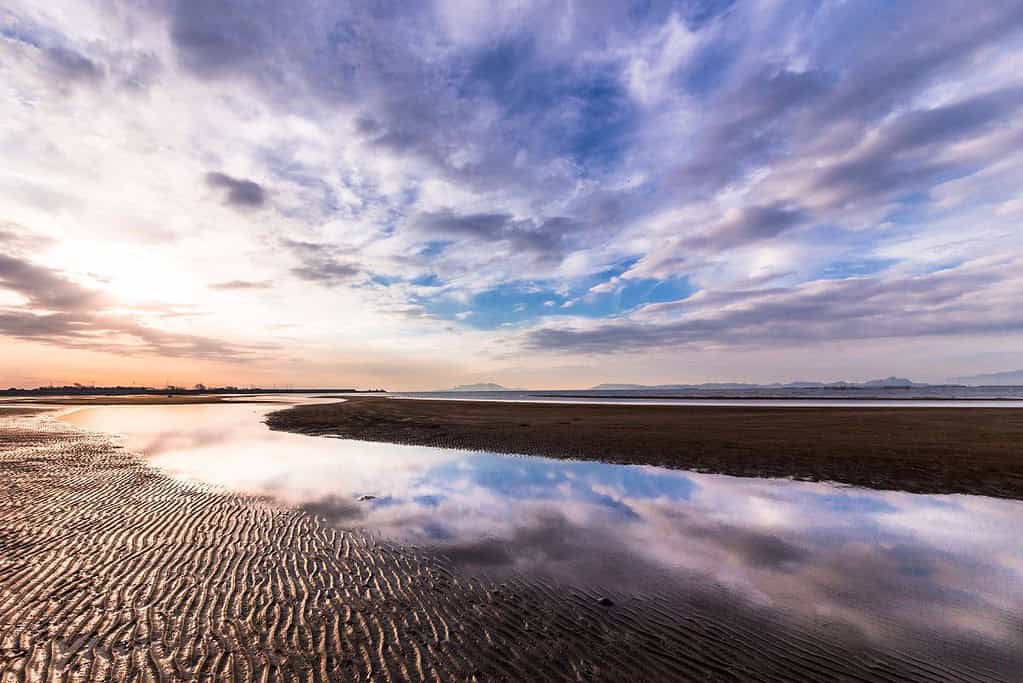
Getbol, a UNESCO World Heritage Site in South Korea, Korean Tidal Flats. These tidal flats are renowned for their exceptional ecological value and cultural significance. They stretch along the country’s western coast, covering vast intertidal mudflats, salt marshes, and sandflats. The Getbol ecosystem is home to diverse migratory birds, fish, and shellfish species, making it an important breeding and feeding ground. These tidal flats also hold cultural importance as they have been used for centuries by local communities for traditional fishing, salt production, and agriculture. The Getbol, Korean Tidal Flats, is a remarkable testament to the harmonious coexistence of nature and human activities.
Jeju Volcanic Island and Lava Tubes
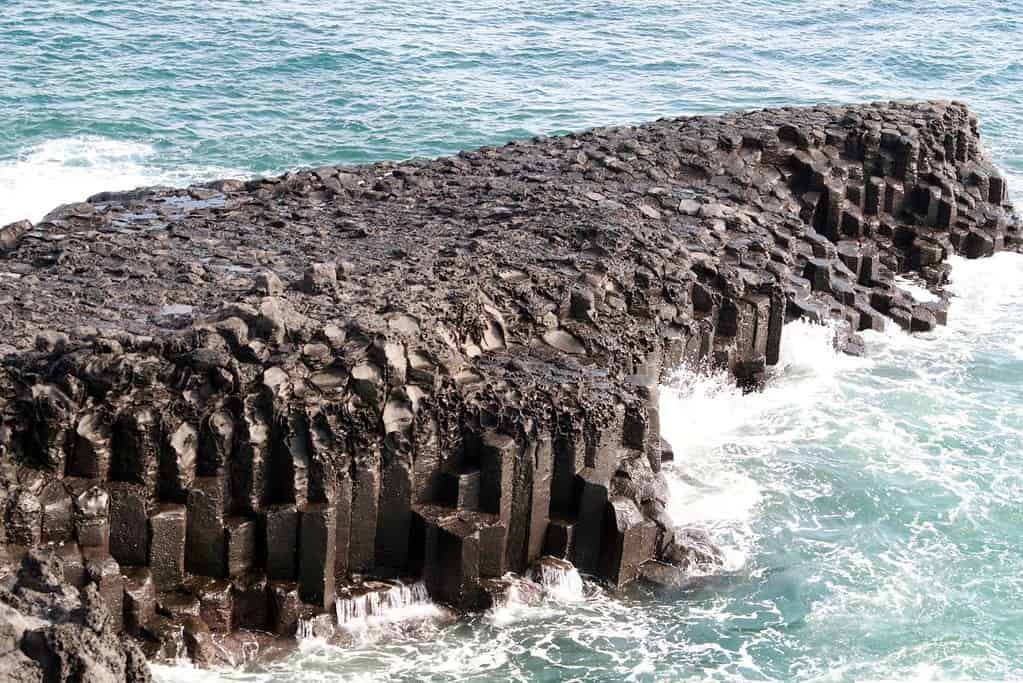
Jeju Volcanic Island and Lava Tubes is a UNESCO World Heritage Site in South Korea. This site showcases the unique geological features of Jeju Island, which was formed through volcanic activity. The island is characterized by its stunning volcanic landscapes, including craters, cones, and lava flows. One of the site’s highlights is its extensive system of lava tubes, which are underground tunnels formed by flowing lava. These lava tubes offer a fascinating glimpse into the island’s volcanic history and are adorned with striking formations such as stalactites and lava stalagmites. Visitors to Jeju Volcanic Island and Lava Tubes can explore these natural wonders while understanding the island’s geological significance.
South Korea UNESCO tentative list
- Kangjingun Kiln Sites
- Mt. Soraksan Nature Reserve
- Sites of fossilized dinosaurs throughout the Southern seacoast
- Salterns
- Daegokcheon Stream Petroglyphs
- Ancient Mountain Fortresses in Central Korea
- Upo Wetland
- Naganeupseong, Town Fortress, and Village
- Oeam Village
- Stone Buddhas and Pagodas at Hwasun Unjusa Temple
- Gaya Tumuli
- Archaeological Remains at the Hoeamsa Temple Site in Yangju City
- Capital Fortifications of Hanyang: Hangyangdoseong Capital City Wall, Bukhansanseong Mountain Fortress, and Tangchundaeseong Defense Wall
Tours in South Korea
Our choices of tours in South Korea are divided into thematic features such as Seoul, Jeju Island, and Busan Experience.
